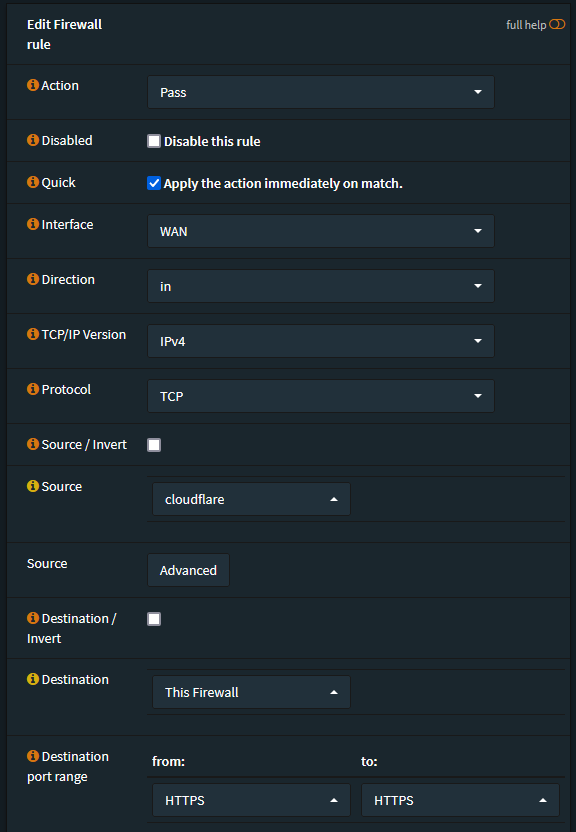After a bit of a crazy week I settled on a simple task to only allow traffic from Cloudflare to access my self-hosted websites, since I use Cloudflare to proxy traffic to my websites. While Cloudflare generally does a good job at hiding your public IP address if you ask them to, if someone happens to get a hold of it they could easily access your website bypassing Cloudflare. It can be done as simply as using the --resolve command line argument in cURL:
1
curl -k https://example.com --resolve 'example.com:443:your_public_ip'
or by creating a custom local DNS record.
While someone with your public IP still will be able to send millions of requests per minute at your router, they will be blocked there. You may still have internet issues but at least your services behind your router will not be bombarded.
Creating an Alias for Cloudflare IP addresses
The first thing you need to do is figure out what IP addresses Cloudflare uses to connect to your server. For this I’m only going to be looking at IPv4 addresses, however their IPv6 ones are also available.
Conveniently, Cloudflare offers a nice list of their IP address ranges.
Now in OPNsense, there are these things called Aliases that basically are just a list of IPs/MAC addresses/GeoIP/etc. info to identify a group of devices. We can easily create an Alias for these Cloudflare IPs.
In OPNsense under Firewall -> Aliases click add.
- Make sure it’s enabled
- Give it a name (for instance
cloudflare) - Set the type to
URL Table (IPs) - Tell it to refresh however often you want
- For the content, give it the URL of Cloudflare IPs
Then click save.
Creating Firewall Rules
Next under Firewall -> Rules -> [WAN] add a rule
- Action: Pass
- Interface: WAN
- Direction: in
- TCP/IP Version: IPv4
- Protocol: TCP
- Source: Select your Cloudflare alias
- Destination: This Firewall
- Destination port range: HTTPS -> HTTPS
Then click save.
That should be it, by default OPNsense blocks traffic so this will only allow Cloudflare to use TCP on the HTTPS port (443).
You can test it out by, on a computer outside your network, running the commands
1
curl -k https://example.com --resolve 'example.com:443:your_public_ip'
and you should see something like this:


